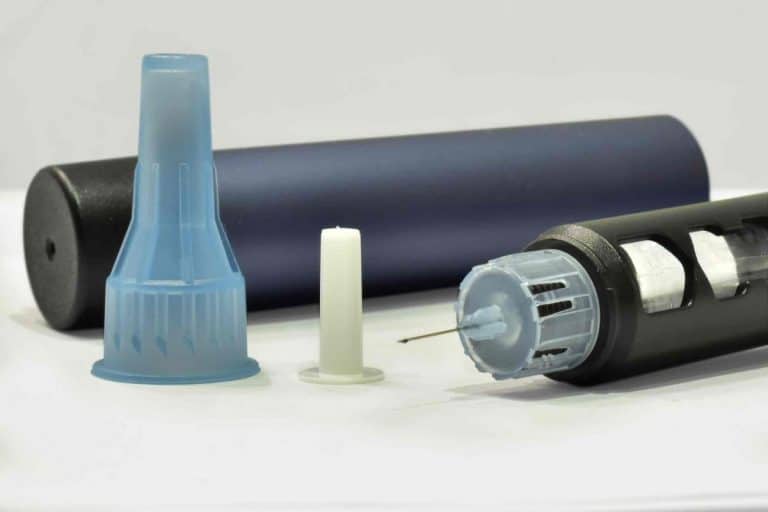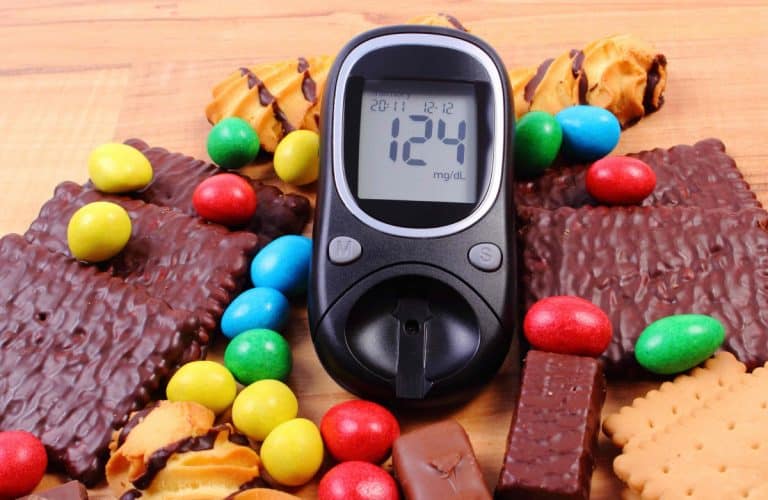Can Diabetics Use a Hot Tub? (Jacuzzi’s, Baths)

Hot tubbing is a wonderful way to relax; the warm, churning water can help lower stress levels, reduce muscle soreness, and promote healthier sleep cycles. People with diabetes, though, should be aware of the risks, as well as benefits, when it comes to sitting in hot water for prolonged periods of time.
Recent studies show that for people with type 2 diabetes, hot tub therapy can facilitate weight loss and improve sleep patterns. However, extreme heat can cause blood vessels to dilate and blood sugar levels to drop dangerously low, so people with type 1 diabetes, or those with type 2 who use insulin, should exercise caution when using hot tubs.
To understand the risks and benefits of hot tubs, it is helpful to learn more about two types of diabetes, and why hot water will affect a person with diabetes the way it does. The following information may be useful, but if you have diabetes, be sure to consult with your medical provider or your diabetes care specialist before participating in any activity involving submersion in hot water.
The differences between type 1 and types 2 diabetes are commonly confused and misunderstood. To understand why an individual with diabetes will react a certain way to high temperatures in hot tubs or baths, it is helpful to first know the differences between the factors involved with these two types of diabetes.
Type 1 Diabetes and Hot Tubs
Type 1 diabetes is a chronic autoimmune condition that renders the body unable to produce insulin. Insulin, a hormone released by the pancreas, helps regulates blood sugar. It is a vital necessity for the body to convert sugars in the bloodstream into usable energy.
When the body does not have enough insulin to break down glucose, it will resort to breaking down fat to produce the energy it needs. This process can potentially lead to Diabetic ketoacidosis (DKA). When experiencing DKA, ketones are released into the body. In small amounts, ketones are not dangerous; however, high ketone levels can be life-threatening and will require immediate treatment.
The symptoms of undiagnosed or untreated type 1 diabetes include excessive thirst, frequent urination, inexplicable weight loss, and frequent exhaustion. Currently, there is no cure for type 1 diabetes, although medical advancements and scientific discoveries have increased the information and resources available for navigating life with this condition.
Type 2 Diabetes and Hot Tubs
Type 2 diabetes occurs when the body experiences insulin resistance, or the inability to process insulin properly. Initially, the pancreas will produce extra insulin, but eventually, it cannot maintain the levels of production necessary to keep blood sugar levels at a healthful balance. Often, lifestyle factors such as obesity, smoking, genetic predispositions, and lack of physical exercise are those that contribute to the diagnosis of type 2 diabetes.
Of the 37.3 million cases of diabetes in the United States, approximately 90% are type 2. This illness is dangerous because it can exacerbate other health complications or lead to heart diseases, strokes, kidney failure, blindness, or amputation. Because diabetes affects so many people, it is important to share information about activities such as hot tub use, that may help reduce painful symptoms and promote a healthier lifestyle.
Hot Water and Insulin
Insulin is the key hormonal component of the physical symptoms that people with diabetes tend to experience. Heat and insulin are a dynamic combination; heat causes insulin to break down more quickly, which means it will not be absorbed in the manner intended. High temperatures also cause blood vessels to dilate, which means that the blood will absorb insulin more quickly and less effectively.
Ideally, insulin should be preserved at a temperature between 36 to 46°F (2.2 to 7.8°C ), although it can withstand temperatures up to 86°F ( 30°C ) before breaking down. If an insulin pump is overheated or exposed to high temperatures, it can exacerbate DKA. Irregular insulin production and extremely low blood sugars are too dangerous to risk, which is why hot tub therapy for extended amounts of time is not typically recommended for people with type 1 diabetes.
Fortunately, not all hot tubs are excessively high in temperature, so as long as you’ve taken the necessary medication and are keeping an eye on blood sugars and physical symptoms. A short soak will likely be just fine.
Are Hot Tubs Therapeutic for Diabetics?
For people with type 2 diabetics, hot tub therapy can be a wonderfully relaxing way to assist the body in regulating blood sugar levels. In fact, by regularly spending time in hot water, people who live with type 2 diabetes have been observed to experience several health benefits.
In a study conducted by Philip L. Hooper, MD, and published in The New England Journal of Medicine, researchers observed a control group of people with type 2 diabetes who spent half an hour per day for six days a week sitting in a hot tub. Participants sat with the water up to their shoulders and the temperature as high as 104°F (40°C ).
After three weeks, the results demonstrated that the patients’ average blood sugar levels were lowered from 182 mg/dl to 159 mg/dl and that the subjects had lost an average of 3.75 pounds (1.7 kg) each. In addition, the subjects’ sleep patterns noticeably improved, which increased energy levels and was beneficial to overall health.
Researchers suggested that a soak in a hot tub effectively improves your heart rate and blood circulation because it mimics rigorous exercise. Since people with type 2 diabetes can be incapable of physically exercising at aerobic levels, hot tub therapy is a useful alternative.
Bacteria In Hot Tubs, What You Should Know
Public hot tubs are required to have a proper level of chlorine to disinfect the water and make it safe to get in.
Hot tubs should be between 86° to 95° (30° to 35°). With proper temperatures and the correct pH, hot tubs still need to be properly maintained or the chemicals will not be killed off.
The high temperature of the hot tub will cause the chlorine to evaporate faster than it would in a standard swimming pool. Illness can occur if you have been exposed to a contaminated hot tub.
People with autoimmune diseases, including type 1 diabetes, are at a higher risk of infection from contaminated water.
People may experience neuropathy, or lack of feeling, in their feet and lower extremities. It is important to check your feet to make sure there are no open wounds or broken skin. Even a small scrape on your foot could be the open gateway for bacteria to enter, leading to infection.
Every person that enters a hot tub carries naturally occurring bacteria. Many people are unaware that they harbor fecal matter in their gluteal folds from inadequate cleaning.
It is extremely important to thoroughly shower both before and after hot tub use on every occasion.
Visit the CDC (Center for Disease Control) for additional information.
Tips and Caveats

If you have diabetes, here are some things to consider before getting into a hot tub:
- Be Mindful of your Continuous Glucose Monitor if you wear one: Most modern continuous glucose monitors (CGMs) are waterproof, but the receiver often is not. Bear in mind that if you swim too far from the sensor, the transmitter may lose communication with it. Older CGM models may get damaged if submerged underwater for extended periods of time.
- Watch for Burns: Since many people with diabetes experience numbness in their extremities due to nerve damage (neuropathy), they may get burned without realizing it. Extremely hot water could burn your feet long before you realize it, and burns cause significant damage to your skin and nerves. Before entering a hot tub, test the water with a hand or elbow. When in doubt, use a thermometer to make sure the temperature does not exceed 105°F (40.6°C ).
- Protect Your Heart: Excessive heat can make your heart beat faster, which helps simulate exercise, but it can be dangerous if you have an additional heart problem. Even though the rest of your body may feel relaxed, your heart may be beating too rapidly. If you have cardiovascular health concerns, the results could involve heart damage. Get clearance from your medical provider that you are able to be physically active. To be safe, take a break from the hot tub after 20-30 minutes.
- Never Go Alone: Sitting in a hot tub can make anyone dizzy, especially someone with low blood sugar. You may not realize you are dizzy until you attempt to stand up, which may result in falling and getting injured. Always have a friend or family member nearby who can offer physical support or help you get out of the hot tub if you are dizzy. Exit the hot tub slowly and carefully.
- Watch Your Blood Sugar Levels: As previously mentioned, hot water speeds up insulin absorption rates, and the dose of insulin you took before getting in the hot tub may not last as long. Be sure to keep track of your body temperature and blood sugar levels so that your body does not reach a dangerous point.
- Avoid Risk of Infection: Because bacteria thrive in warm temperatures, public hot tubs can host harmful bacteria that can cause infections. This can be especially dangerous for people with diabetes, particularly those with nerve damage, because they are at higher risk. To avoid risking infection, make sure the hot tub is clean and that you do not have any open sores or wounds that would give bacteria open access to your body.
- Talk to Your Doctor: As always, consult with a medical professional before starting or changing any physical behavior that may affect your condition. Only a medical provider or diabetes care specialist can recommend or discourage activities specific to your circumstances and health.






